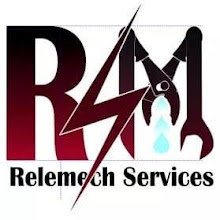Think light emitting diodes (LEDs) are just for flashlights and cell phone displays? Think again. Once relegated to humble indicator lights in electronic devices, LED lights have advanced at remarkable rights to enable an entirely new category of lighting that's projected to reach $30 billion by 2025. LED lights have been hailed as the future of home lighting as they use very little energy, claim to last a very long time and, unlike regular energy-saving bulbs, they are instantly bright when switched on.
 |
| Decorative LED Lighting |
LED , which stands for light–emitting diodes, are semiconductor devices that produce visible light when an electrical current passed through them. LEDs are a type of Solid State Lighting (SSL), as are organic light–emitting diodes (OLEDs) and light–emitting polymers (LEPs)
How Do They Work?
As indicated by its name, the LED is a diode that emits light. A diode is a device that allows current to flow in only one direction. Almost any two conductive materials will form a diode when placed in contact with each other. When electricity is passed through the diode the atoms in one material (within the semiconductor chip) are excited to a higher energy level. The atoms in that first material have too much energy and need to release that energy. The energy is then released as the atoms shed electrons to the other material within the chip. During this energy release light is created. The color of the light from the LED is a function of the ingredients (materials) and recipes (processes) that make up the chip |
| Structure Of an LED Lights |
 |
| Illustration Of How a Diode Emits Light |
Why is everyone so crazed about LEDs?
Over the past decade, LED technology has advanced at light speed. In the past, lack of colors and the low intensity made LEDs useful only as indicator lights. As manufacturing methods and technology improved, the LED quickly found homes in more and more applications. These days, the LED is becoming a preferred light source for much more than simple indicators. LED light sources are also gaining popularity due to the growing energy conservation movement as no other lighting technology offers as much potential to save energy and enhance the quality of our building environments.
What Are The Advantages Of LED Lighting
- Efficiency: LEDs are extremely energy efficient and consume up to 90% less power than incandescent bulbs thus there is a dramatic decrease in power costs. Also, money and energy is saved in maintenance and replacement costs due to the long LED lifespan. The are also ideal in remote areas that use solar panels.
- Longevity: An LED light will last over 7 years (constant use) before needing replacement. On average, LED bulbs last 10 times as long as compact fluorescent bulbs, and 133 times longer than typical incandescent bulbs. Long lifespan of LEDs dramatically reduces maintenance costs and lower long-term operating costs.
- Durability:An LED light is a tiny chip encapsulated in an epoxy resin enclosure, which makes LEDs far sturdier than traditional incandescent light bulbs or fluorescent tubes. Since LEDs don't use fragile components such as glass and filaments, LEDs are able to withstand shock, vibration and extreme temperature.
- Safety: LED lights generate virtually no heat therefore they are cool to the touch and can be left on for hours without incident or consequence if touched.In comparison, incandescent lighting expels 90% of the energy it consumes via heat, making the bulbs hot to the touch. LEDs reduce the potential for safety risks such as burns and fires.
- Environment: LEDs are made from non toxic materials, unlike fluorescent lighting that uses mercury that may pose a danger to the environment. LED’s are also recyclable and considered “green” or Earth-Friendly.
- Color: LED lights are offered in a variety of base colors such as Red, Green, Blue and Amber. Because traditional incandescent light bulbs use filters to produce colors, they are extremely inefficient. LEDS can be blended together to produce millions of color options.
- Future: LEDs are poised to replace traditional incandescent light bulbs. LEDs are rapidly becoming the preferred lighting solution of both professionals and residential users. LED technology is continually advancing - producing brighter LED bulbs.
- Uses: LEDs are currently used for a wide variety of different applications such as: residential lighting, aerospace industry, architectural, automotive, broadcasting, electronic instrumentation, entertainment and gaming, the military, traffic and transportation. Since LEDs are focused lights they prove best at specific lighting tasks such as desk lamps, reading lights, night lights, security lights, spot lights, accent lights and lighting for signage.
In our next piece we will share with you the drawbacks or disadvantages of LED Lighting but for now we leave you to marvel at how much beauty LED Lighting comes with:
 |
| Canton Tower, Guangzhou |
 |
| Isn't it just Beautiful? |












